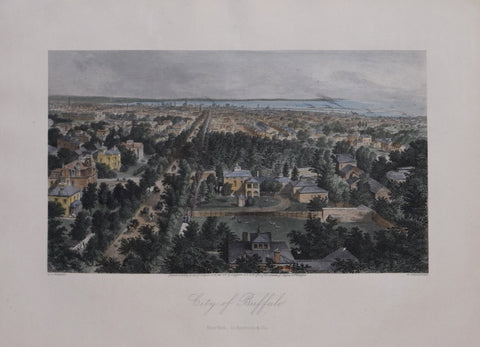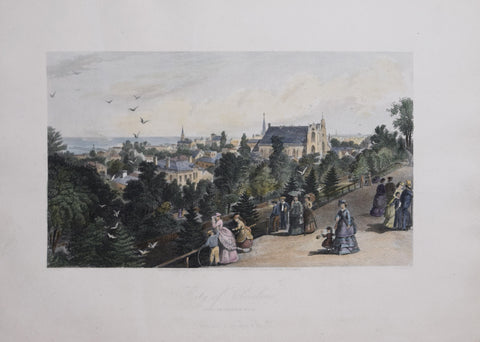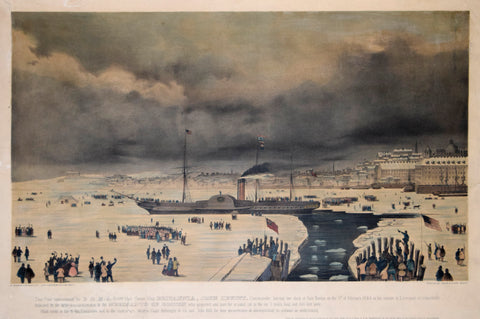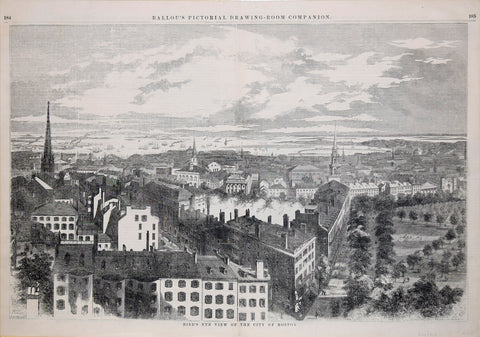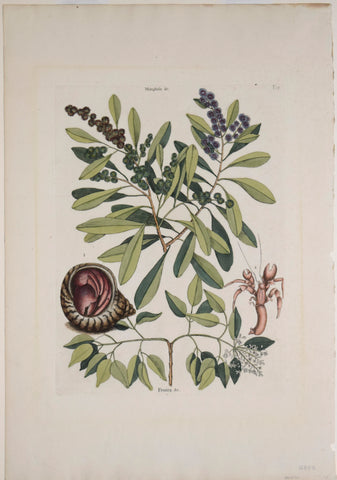
Mark Catesby (1683-1749), T33-The Hermit Crab
Mark Catesby (1683-1749)
T33-The Hermit Crab
from Natural History of Carolina, Florida and the Bahama Islands..., Volume 2
Published, London, 1731-43, First edition
Engraving with hand coloring
Image size: 21 1/2 x 14 1/2"
Ref: Anker, Bird Books and Bird Art, 95
The Hermit Crab.
The Fore-part of this Crab, being about one half of its Body is crustaceous, and of a purple Colour, the Hind-part is soft and tender, of a livid fleshy Colour, and covered over with only a soft Skin, which not being so defensible as the crustaceous Part, and being more liable to be bruised or hurt by the Attacks of Animals that prey on them, Nature hath directed it for the Security of that tender Part to get into and inhabit the empty Shell of a Fish that best fits its Size and Shape: When the Crab grows too big for the Shell to contain, it leaves that and seeks another more commodious, so continues changing his Habitation as he increases in largeness, which from being no bigger than will fill the Shell of a small Snail or Perriwinkle, will become when at full Growth bigger than that here figured: They crawl very fast with the Shell on their Back, and at the Approach of Danger draw themselves within the Shell, and thrusting out the larger Claw in a defensive Posture, and will pinch very hard whatever molests them: They frequent most those Parts of the Sea-Shores which are covered with Trees and Shrubs, producing various wild Fruits, on which they subsist, tho' I have seen them feed on the Fragments of Fish and other animal Substances, cast on Shoar. They being roasted in the Shell are esteemed delicate. I don't remember to have seen any of them to go into the Sea. The Shells they mostly make use of are of the Buccinum Kind, whose spiral Form is best fit to hold them fast, and secure them in the Shell, in which they can fix themselves so fast, by Means of short Claws at their Tails, that in pulling them out of it, the tender Part separates from the crustaceous, and remain in the spiral Part of the Shell. Fig. 1. shews the Animal in the Shell. Fig. 2, chews the Animal out of the Shell.
Manghala arbor Curassavica, foliis Salignis. Hort. Amst.
BUTTON-WOOD. Hist. Jam. Vol. I. p 18.
As Sir Hans Sloane in his Natural History of Jamaica, has accurately described this Tree, I conceive it necessary to add only what I know more concerning it. They grow always near the Sea and in Salt Water, and are found on all the Coasts of America between the Tropicks in greater Plenty than any other Shrub: They being small, I know of no Mechanick Use they are put to, but for burning, it is esteemed the bell Wood in these Latitudes. Where these Trees are found, there are generally under them great Plenty of Hermit Crabs, which probably may feed on its fallen Fruit.
Frutex trifolius resinosus; floribus tetra-petalis albis racemosis.
This Shrub grows to the Height of about six Feet, producing trifoliated, pointed, stiff, shining Leaves growing opposite to one another on Foot-Stalks two Inches long, and at the Ends of the Branches grow four or five slender Stalks set with many very small white Flowers.
We Also Recommend


